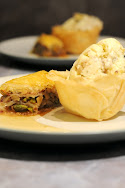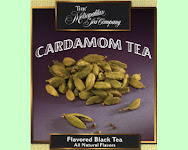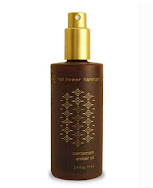Cardamom is the richest source of the compound, cineole, a potent antiseptic that also kills bad breath bacteria. Chewing a green cardamom can greatly help to freshen your breath.
Cardamom is one of the world’s very ancient spices. It is native to the East originating in the forests of the western ghats in southern India, where it grows wild. Today it also grows in Sri Lanka, Guatemala, Indo China and Tanzania. The ancient Egyptians chewed cardamom seeds as a tooth cleaner; the Greeks and Romans used it as a perfume. Vikings came upon cardamom about one thousand years ago, in Constantinople, and introduced it into Scandinavia, where it remains popular to this day.
Cardamom is an expensive spice, second only to saffron. It is often adulterated and there are many inferior substitutes from cardamom-related plants, such as Siam cardamom, Nepal cardamom, winged Java cardamom, and bastard cardamom. However, it is only Elettaria cardamomum which is the true cardamom. Indian cardamom is known in two main varieties: Malabar cardamom and Mysore cardamom. The Mysore variety contains higher levels of cineol and limonene and hence is more aromatic
Cardamom comes from the seeds of a ginger-like plant. The small, brown-black sticky seeds are contained in a pod in three double rows with about six seeds in each row. The pods are between 5-20 mm (1/4”-3/4”) long, the larger variety known as ‘black’, being brown and the smaller being green. White-bleached pods are also available. The pods are roughly triangular in cross section and oval or oblate. Their dried surface is rough and furrowed, the large ‘blacks’ having deep wrinkles. The texture of the pod is that of tough paper. Pods are available whole or split and the seeds are sold loose or ground. It is best to buy the whole pods as ground cardamom quickly loses flavour.
Bouquet: Pungent, warm and aromatic.
Flavour: Warm and eucalyptine with camphorous and lemony undertones. Black cardamom is blunter, the eucalyptus and camphor suggestions very pronounced.
Hotness Scale: 2
Culinary Uses
The pods can be used whole or split when cooked in Indian substantial meals — such as pulses. Otherwise, the seeds can be bruised and fried before adding main ingredients to the pan, or pounded with other spices as required. Keep the pods whole until use. The pod itself is neutral in flavour and not generally used, imparting an unpleasant bitter flavour when left in dishes.
Cardamom is used mainly in the Near and Far East. Its commonest Western manifestation is in Dutch ‘windmill’ biscuits and Scandinavian-style cakes and pastries, and in akvavit. It features in curries, is essential in pilaus (rice dishes) and gives character to pulse dishes. Cardamom is often included in Indian sweet dishes and drinks. At least partially because of its high price, it is seen as a ‘festive’ spice. Other uses are; in pickles, especially pickled herring; in punches and mulled wines; occasionally with meat, poultry and shellfish. It flavours custards, and some Russian liqueurs. Cardamom is also chewed habitually (like nuts) where freely available, as in the East Indies, and in the Indian masticory, betel pan. It is a flavouring for Arab and Turkish coffee which is served with an elaborate ritual.
Attributed Medicinal Properties
A stimulant and carminative, cardamom is not used in Western medicine for it own properties, but forms a flavouring and basis for medicinal preparations for indigestion and flatulence using other substances, entering into a synergetic relationship with them. The Arabs attributed aphrodisiac qualities to it (it features regularly in the Arabian Nights) and the ancient Indians regarded it as a cure for obesity. It has been used as a digestive since ancient times. A medicinal (perhaps aphrodisiac) cordial can be made by macerating seeds in hot water.
Plant Description and Cultivation
A perennial bush of the ginger family, with sheathed stems reaching 2-5m (6-16 feet) in height. It has a large tuberous rhizome and long, dark green leaves 30-60 cm (1-2 ft) long, 5-15 cm (2-6”) wide. It grows in the tropics, wild and in plantations. Trailing leafy stalks grow from the plant base at ground level. These bear the seed pods. The flowers are green with a white purple-veined tip.
Cardamoms are traditionally grown in partially cleared tropical rain forests, leaving some shade. Similarly, in plantation cultivation, forest undergrowth is cleared and trees thinned to give just enough shade and the rhizome or seeds planted at 3m (10 ft) intervals. The plants are gathered in October-December, before they ripen, to avoid the capsules splitting during drying. They are dried in the sun or bleached with sulphur fumes.
| Family | Zingiberaceae |
| Genus and specie | Elettaria cardamomum |
Elettaria, Cardamon, Lesser Cardamom
French: cardamome
German: Kardamom
Italian: cardamomo, cardamone
Spanish: cardamomo
Burmese: phalazee
Chinese: ts’ao-k’ou
Indian: chhoti elachi, e(e)lachie, ela(i)chi, illaichi
Indonesian: kapulaga
Malay: buah pelaga
Sinhalese: enasal
Tamil: elam
Thai: grawahn, kravan
Description of the herb cardamom
Cardamom is an evergreen perennial with thick rhizomes and erect stems bearing pointed leaves. White flowers with a pink to violet striped lip are born in a loose spike in summer, followed by pale green to beige, 3-celled capsules, containing 15-20 aromatic seeds.
The seeds and oil are used in herbal preparations and the seeds to flavor baked goods, coffee, curries, pickles, desserts and mulled wine.
Cardamom is a pungent, warm, aromatic herb that has expectorant, stimulating, tonic effects and is reputed to have aphrodisiac qualities. It is used to counteracts the toxic effects of coffee and mucus forming foods, such as dairy products.
The monoterpenes found in the oil contained in the seeds have antibacterial, antimycotic, antiviral, as well as spasmolytic properties and are used for their carminative, antispasmodic and expectorant effect.
- Internal use
- Cardamom is used internally for indigestion, nausea, vomiting and pulmonary disease with copious phlegm.
- It can be used with a laxative to prevent stomach pain, griping, as well as flatulence.
- The seeds are also chewed to sweeten the breath and taken to detoxify caffeine in people taking excessive amounts of coffee.
- External use
- It has no external use as such, but the seeds are extensively used in foods in Northern Europe and the Middle East. Used to flavor coffee, baked goods, curries and pickles, milk desserts and mulled wine.
- Aromatherapy and essential oil use
- The essential oil of cardamom is used for its uplifting and invigorating properties and helps digestion and nausea.
- It is used as an aphrodisiac, helpful in countering the irritation experienced during premenstrual tension (PMS) and works well on the respiratory system, to ease coughs and warming the body.
- The therapeutic properties of cardamom essential oil include the following: antiseptic, carminative, digestive, diuretic, stimulant, stomachic, tonic and anti-spasmodic.
Safety precautions and warnings
None known, but people with sensitive skins must use the essential oil carefully.
In Ayurvedic medicine, cardamom is not used in pregnancy nor recommended for people with gallstones.






















